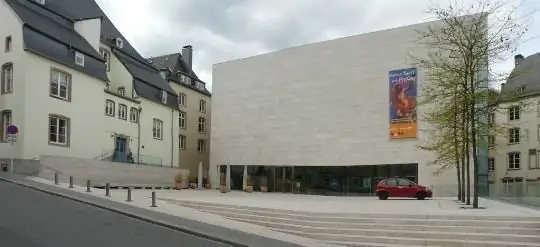
Description of the attraction
The National Museum of History and Art is one of the most interesting and popular attractions in the city of Luxembourg. The museum is located in the historic center of the city in the Ville Hout area on Marche-aux-Poisson.
The idea of creating a historical museum in Luxembourg was first announced at the end of the 18th century, when Luxembourg, occupied by the French, became part of the Foret department, but remained unrealized. In 1845, the Society for the Study and Preservation of Monuments of the Grand Duchy of Luxembourg (later the Archaeological Society) was founded in Luxembourg, the main purpose of which was to collect, study and preserve the country's historical and artistic heritage. Subsequently, the society was widely supported by the Institute of the Grand Duchy, under the jurisdiction of the historical department of which the collections of antiquities collected by that time were officially transferred.
In 1922, within the framework of the large-scale project "The State Museum of Luxembourg", within the walls of which it was planned to present to the public not only the artifacts collected by the Archaeological Society, but also the exhibits of the Museum of Natural History, the government acquired a mansion on Marché-aux-Poisson. The museum was opened only after the end of the Second World War.
As the years passed, the collection of the museum grew rapidly and the available exhibition space was sorely lacking. The acquisition of two neighboring buildings did not fundamentally change the situation, and in 1988 it was decided to divide the State Museum into two separate administrative units - the Museum of Natural History and the National Museum of History and Arts. In 1996, the Museum of Natural History moved, and the National Museum of History and Art remained on Marché-aux-Poisson, and soon another building was erected here for the museum, the grand opening of which took place in 2002.
The collection of the museum is extensive and varied - these are various archaeological finds, from the prehistoric period to the Middle Ages (sarcophagi, tools, coins, jewelry, etc.), church relics, sculpture, painting and much more. Among the most valuable and interesting museum exhibits, it is worth noting the ancient astronomical clock, acquired for the future museum back in 1796, the works of such talented sculptors as Auguste Tremont and Lucien Vercollier, as well as paintings by Joseph Cutter, Dominique Lang, Eugene Mousset, etc. The museum's excellent library contains over 25,000 volumes of specialized literature.






